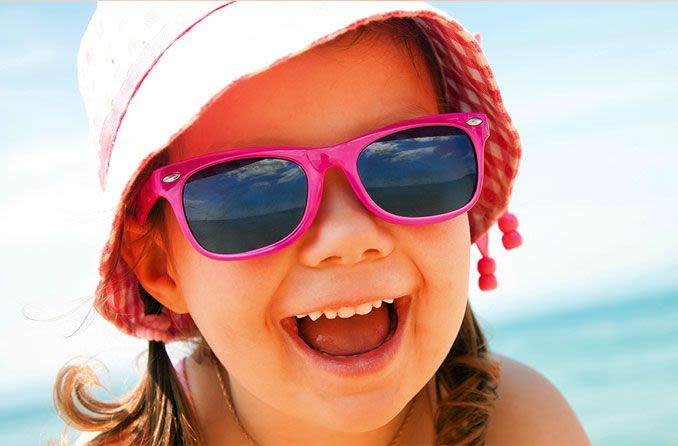Buying kids' sunglasses? Here's what to look for

Do children need sunglasses?
Yes, they absolutely do. Damage to eyes from exposure to the suns harmful ultraviolet (UV) radiation is cumulative over our lifetime.
Because children spend much more time outdoors than most adults do, kids' sunglasses that block 100 percent UV are especially important.
Some experts estimate that up to half of a person's lifetime exposure to UV radiation occurs by age 18. If this is true, sunglasses may be more important for children than most people imagine.
Wearing sunglasses during childhood may play an important role in preventing eye problems later in life that have been associated with cumulative UV exposure, including cataracts and pterygia.

Sunglasses help protect children's eyes from UV rays and glare, whether it's a sunny day at the beach or a cloudy day on a snowy mountaintop. Make sure your child's sunglass lenses are made of a shatter-resistant material such as polycarbonate.
And UV rays aren't the only potential danger from sunlight.
Recently, researchers have suggested that long-term exposure to high-energy visible blue light from sunlight might also cause eye damage over time, including increasing the risk of macular degeneration later in life.
Children's eyes are more susceptible to UV and blue light than adult eyes because the lens inside a child's eye is less capable of filtering these high-energy rays. This is especially true for young children, so it's wise for kids to start wearing protective sunglasses outdoors as early in life as possible.
Also, be aware that your child's exposure to UV rays increases at high altitudes, in tropical locales and in highly reflective environments (such as in snow, on the water or on a sandy beach). Protective sunwear is especially important for kids in these situations.
Choosing sunglass lens colours
The level of UV protection sunglasses provide has nothing to do with the colour of the lenses.
As long as your optician certifies that the lenses block 100 percent of the sun's UV rays, the choice of colour and tint density is a matter of personal preference.
Most sunglass lenses that block the sun's HEV rays are amber or copper in colour. By blocking blue light, these lenses also enhance contrast.
Another great option is spectacles with photochromic lenses, which are clear indoors and darken automatically in sunlight.
Photochromic lenses eliminate the need for a separate pair of sunglasses for children who need glasses for vision correction and are available in a variety of lens materials and colours.
All photochromic lenses block 100 percent UV and provide ample protection from high-energy visible blue light.
Where to buy kids' sunglasses
Children's sunglasses can be purchased from a variety of places, including your opticians, online retailers, eyewear stores and sunglass specialty stores.
Wherever you go, look for a good selection of sunglass frames scaled specifically for a child's facial dimensions. Also, choose polycarbonate lenses for the best combination of lightweight comfort and impact resistance for added safety.
Finally, enquire about product warranties and satisfaction guarantees before you purchase sunglasses for children.
Don't forget the accessories
During the selection and fitting of your child's sunglasses, the optician should explain the benefits of the sunglasses and how to care for them.
Often, the optician will include or recommend cleaning cloths, solutions and a protective, hard-shell case to store the sunglasses in when they are not worn.
Sports cords also are a good idea. These can be attached to the temples of the sunglasses so that the do not get knocked off during activities and wont get lost or damaged.
READY TO SHOP FOR SUNNIES FOR YOUR CHILD? Find an optician or optical store near you.
Page published on Thursday, 27 June 2019






